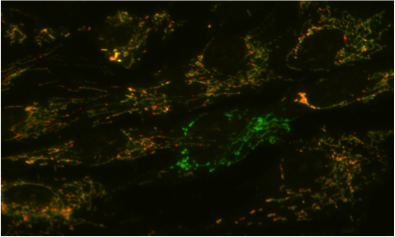 Using a difficult laboratory technique, HSCI physician-researchers have isolated genetically healthy stem cells from patients with Pearson Marrow Pancreas Syndrome (PS), a generally fatal infant blood disorder with less than a hundred reported cases worldwide. Children with PS experience a range of symptoms, most notably: anemia, decreased organ function, and difficulty absorbing nutrients and gaining weight. Blood transfusions can prolong life, but once diagnosed, a PS patient isn’t expected to make it past his or her fifth birthday.
Using a difficult laboratory technique, HSCI physician-researchers have isolated genetically healthy stem cells from patients with Pearson Marrow Pancreas Syndrome (PS), a generally fatal infant blood disorder with less than a hundred reported cases worldwide. Children with PS experience a range of symptoms, most notably: anemia, decreased organ function, and difficulty absorbing nutrients and gaining weight. Blood transfusions can prolong life, but once diagnosed, a PS patient isn’t expected to make it past his or her fifth birthday.
HSCI Principal Faculty member Suneet Agarwal, MD, PhD, at Boston Children’s Hospital, is one of only a few physicians in the United States actively researching rare blood disorders like PS. “At Children’s, I get exposed to these diseases because of our referrals from around the country and around the world to care for these patients,” he said.
Pearson Marrow Pancreas Syndrome is caused by a deletion of a specific region of a person’s mitochondrial DNA. In addition to a complete set of parental chromosomes, all human cells carry additional genes in their mitochondria, mostly dedicated to energy production. In PS, varying levels of mutant mitochondrial DNA in different cells determines the severity of symptoms for individuals with the disease, leading to a diagnosis with no sure prognosis.
Curious to learn more about PS at the molecular level, Agarwal’s lab, in collaboration with HSCI Executive Committee member George Daley, MD, PhD, reprogrammed cells from patients into induced pluripotent stem cells. Despite technical challenges and due to the mixture of affected mitochondria found in patients, Agarwal was able to isolate stem cells that had no mutant mitochondrial DNA. “While making these manipulations, all of a sudden, in our hands is something genetically identical to the patient, a living cell, that doesn’t have the defect anymore,” he said, “so it essentially corrected itself.”
With the support of a 2013 HSCI Seed Grant, Agarwal plans to investigate whether his technical achievement can translate into patient therapies.
Source: Induced Pluripotent Stem Cells with a Pathological Mitochondrial DNA Deletion. Stem Cells. February 12, 2013
Photo: Mitochondrial DNA fluorescence in situ hybridization showing normal mitochondrial DNA in yellow and mutated mitochondrial DNA in green (Credit: Suneet Agarwal)
